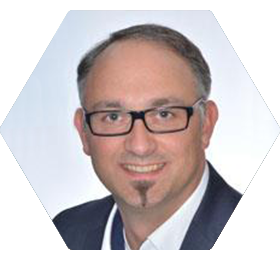Warm demolition, planned crashes or expensive phantom bling: the list of different types of insurance fraud is long – the damage tremendous. The German Insurance Association (GDV) estimates the damage that arises for companies annually at five billion Euros. No division is immune to actions to commit fraudulent acts for financial reasons; frauds have developed their tricks and patterns everywhere to force unwarranted claims payments. As a result, it is no wonder that insurance companies are planning a more resolute procedure against insurance fraud and abuse. The concentrations here are on the automation of the damage claim process and the use of new technologies. An anti-fraud community has also been formed in the InsurTech sector: these startups have developed promising solutions for very individual challenges – the magic word for many of these solutions is AI (artificial intelligence). We spoke with our experts Karsten Schmitt and Marco Peisker about what developments in fraud prevention should be observed and where we currently stand here.
Karsten, you are very familiar with the insurance market. In which divisions do cases occur most often that cause this high level of damage for the insurance industry?
Karsten Schmitt: First of all, it should be mentioned that the typical insurance fraud is not easy to be characterized or detected. The perpetrators can be found in all walks of life and range from occasional perpetrators to organized crime. The occasional perpetrators often use events that actually occurred and manipulate, for example, how the damage was caused or the damage images. In contrast to this, perpetrators in the organized sector do this with a high level of criminal energy and high professionalism. Significant damage is present nearly everywhere – whether personal liability and household insurance, health and accident insurance or legal insurance. However, car insurance is the division that is solely responsible for about half of the total damage. Disdainful metal is turned into real money here, which permits the use of automated fraud detection due to the frequency of damage and the regular amount of damage. Whether this is done by an optimized expert policy or AI is of secondary importance. It is important that an appropriate solution is successfully implemented.
Success is a good catchword. In your opinion, how can you evaluate the success of such a project and how do you proceed?
Karsten Schmitt: There are two clear criteria for success in the projects for fraud detection and they are closely connected: first of all, find as many dubious insurance claims as possible, second, receive as many incorrectly identified cases of fraud – so-called "false positives" – as possible. That is extremely important for the subsequent workflow. The start of a project to implement an expert policy follows the classic project procedure and relies equally on professional and technical expertise. We have the corresponding specialists for this. The AI projects in contrast require a somewhat different approach. The significant requirement here is the precise detection of abnormalities and connections in a large quantity of data. In order to implement this successfully, we developed the "Building AI-based Systems" model with concrete project phases, roles and responsibilities. We believe that AI is particularly suitable for fraud detection in the insurance industry, because there is a lot of data and clear criteria for success, as mentioned before.
In the beginning, it was said that insurance companies want to be much stricter in the fight against insurance fraud in the future. Why is this the case and what does that mean for the future?
Karsten Schmitt: Yes, correct. The topic is currently receiving a lot of attention, but the motivation for the increasingly stricter approach is very different. Whether it be the increasing zero tolerance attitude and the attempt to protect the insured individuals who behave correctly, the tense cost situation or the increasingly stricter regulatory environment. Many insurance companies have recognized that an investment in IT modernization and process automation is clearly worthwhile, particularly in this sector. If you take a look at the international market for fraud detection, several new commitments can be observed. If you believe the current forecasts, the worldwide market for fraud detection and prevention should grow by up to 25 percent over the next few years – annually. Progress in computer speed, machine learning and diverse forms of AI are seen as the drivers for this growth. We have gathered a lot of experience both domestically and internationally in the area of data-based fraud detection. This means we are in a great position to support our customers as best possible and to help them have success with this topic.
The startups also probably provide a contribution to this progress. Marco, you always have a close eye on the InsurTech sector. What is happening in this sector and what distinguishes the developments there?
Dr. Marco Peisker: A lot is happening there right now. InsurTechs are extremely exciting companies, because they have an initial advantage. They start with their product on a green meadow, can develop very agilely and slim through their knowledge and product and connect this later with other systems or products, for example, through the use of open interfaces. The current developments, however, show that the hype around InsurTechs is slowly losing ground. The number of investments is decreasing, but the investment amounts are tending to increase. In my opinion, the technology basis has been consolidated. This is also seen in that startups are beginning to go into more cooperations with seasoned players. Both sides profit from this. There are currently around a dozen InsurTechs that have developed promising approaches that can be used for fraud prevention.
And what are these promising approaches with fraud detection?
Dr. Marco Peisker: Concrete examples for this include approaches for fraud detection or workflow control based on machine learning. Furthermore, the optical examination of documents and damage pictures, which is relevant for the increasing number of digital documents, or also so-called crawlers that search the internet for alleged stolen goods and can thereby help uncover possible fraud. Also exciting is the fact that the detection of dubios insurance cases has been improved considerably through the use of artificial intelligence. The detection rate was by more or less ten percent in the past. Now up to 75 percent of fraud cases can be detected with this technology. That is great progress, in particular for the output processing following this. Unfortunately, the solutions stop here for many companies. That is why we follow the approach of supporting the customers throughout the entire process of fraud management.
You just said that a lot is being said about machine learning, a branch of AI or image analysis. How can the status quo of these technologies be described and what are the advantages and disadvantages?
Dr. Marco Peisker: I think the automated analysis of damage images is particularly interesting in this special area. The use of so-called Convolutional Neural Networks (CNN), a special form of artificial neuronal networks, allows the systems to detect concrete objects on images or to even assign them to certain damage scenarios. Combined with image forensic materials, very effective tools for fraud detection are created. For example, you can determine if the images transferred by the insured individual were edited (so-called ELA process) and based on the metadata, it is possible to read the original time the picture was taken. Nevertheless, this process has its limits if the basic administrative process was not adjusted correspondingly as well. If, for example, the damage images are submitted in an analog form or the digitally transferred images were "analoged" during inbox processing and "re-digitalized", then many of the available solutions are blunt swords. In particular the analysis of metadata would be irrelevant, but this is what offers extremely valuable information for fraud detection.
Let's continue with artificial intelligence. This technology often has the reputation of being a type of black box. What limits do you believe AI has and how can this dilemma be solved?
Dr. Marco Peisker: Yes, I am critical of the use of "classic" approaches to machine learning, particularly for fraud detection. Artificial neuronal networks are very effective per se. They make decisions that they learned individually and detect connections that are not directly evident to human processors. This is a so-called black box procedure where a variety of data is automatically analyzed and the affiliated objects are classified. But now we get to the most important point. The fraud specialist often does not know the reasons for the assessment, which means they have to figure this out which is very tiresome and costs a lot of money. Particularly for the rejection of claims payments and from a compliance aspect, a comprehensive reasoning for the assessment and classification is essential. In my opinion, the solution is the constant enhancement of the classic rule-based expert systems with newer approaches of machine learning. AI, for example, can constantly evaluate and improve the rules that were created by experts and made understandable for human processors. This can significantly increase the hit precision. Furthermore, we should take a look at the young white box process. The Explainable Artificial Intelligence (XAI) offers promising possibilities for illustrating the decisions from AI systems in an understandable and transparent manner. This technology may still have its training wheels on, but the potentials that can already be seen today are promising.

Karsten, you are surely confronted with this question often. The acceptance of new technology is always a question of references. Where can we score regarding AI and fraud detection?
Karsten Schmitt: That's right. The doors hardly ever open without references. We have completed very successful AI projects in the past. This also includes artificial intelligence that is used for fraud detection in private health insurance. The application is able to automatically filter out suspicious incidents from the bills and to pass these off to the claim handlers. The private insurance industry is a division that has not yet been a primary focus for fraud detection. That is why we are particularly proud of this successful implementation. Of course, there are countless other projects.
A final assessment: How do you think fraud detection will develop in the future?
Karsten Schmitt: A systematic treatment of fraudulent insurance claims will be increasingly indispensable for insurance companies. It is notoriously known that frauds in the insurance industry are normally a step ahead. The technology approaches that were just shown help us close the gap and hit the ground running. In my opinion, fraud detection will be automated even more due to the increasing precision of the previously mentioned technologies and therefore contribute even more to a permanent reduction of damage costs. This benefits the insurance community as well. In particular AI-based fraud detection will become an integral component and therefore develop into a standard in modern claims management.
Interview participants:
Karsten Schmitt is a Senior Business Development Manager at adesso insurance solutions GmbH in the area of inventory management and claims management and also responsible for the intelligent structuring of data.
Dr. Marco Peisker is the Managing Consultant at adesso AG and handles different aspects of digitalization in the insurance industry, in particular the optimal use of intelligent systems for fraud prevention and workflow control.
Do you want to find out more about our AI solutions for fraud detection and claims processing? Then contact our expert Karsten Schmitt directly!

